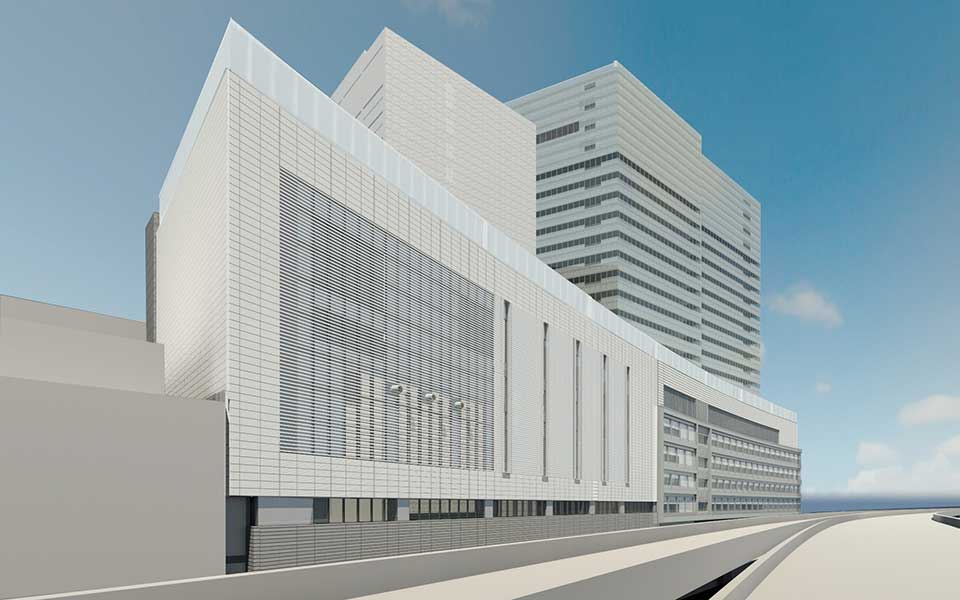Building the Energy Building
The Energy Building is the centerpiece of NYU Langone’s plan to become a resilient and reliable medical center and a leader in sustainability by reducing our contribution to global warming as a result of clean and efficient energy use.
With a new combined heat and power (CHP) plant, emergency generators, and boilers in the building, the Energy Building affords NYU Langone the capacity to be completely self-sufficient in the event of a utility power interruption, with two different sources of backup power for our critical areas.

The CHP plant is also environmentally friendly. Since kicking off our current energy conservation program in 2007, we have reduced our greenhouse gas emissions by 22 percent across all of our owned properties. This new plant is bolstering our efforts, enabling us to achieve our goal of reducing emissions by 50 percent. Operating the CHP plant alone will have the same environmental impact as taking more than 4,600 cars off the road.
Our Primary Electric Service
The 71,000-square-foot, state-of-the-art energy facility provides the primary electric service to the campus, accommodates the anticipated growth in energy consumption, and employs CHP generation technology to produce energy that is cleaner and more economical.
At its heart is an 11-megawatt cogeneration, combined cycle plant. It includes a dual-fuel fired turbine (using natural gas normally, and diesel oil as a backup) that produces 8 megawatts of power. The waste heat from the gas turbine then enters a heat recovery steam generator (HRSG), which produces about 130,000 pounds of steam per hour. This steam powers a steam turbine generator, creating an additional 3 megawatts of power.
Next, the steam is distributed throughout the main campus to provide heat, hot water, sterilization, and humidification. Finally, the steam is condensed back into water and pumped into the HRSG to help create more steam. This cycle substantially reduces the need to purchase electrical power from outside sources.
In addition, two back-up boilers supply steam to the campus when the gas turbine/HRSG/steam turbine system is shut down for maintenance, thus ensuring the main campus always has steam. The Energy Building also houses a 7.5-megawatt diesel-fired emergency power plant if the main system fails for any reason.
The Energy Building is strategically positioned just south of the Helen L. and Martin S. Kimmel Pavilion and adjacent to Tisch Hospital, hugging the FDR Service Road at the eastern boundary of the main campus.
The building also houses the campus’ Department of Radiation Oncology, in a configuration that enables seamless connections between Tisch Hospital and the Kimmel Pavilion, both of which use the new radiation oncology facility.